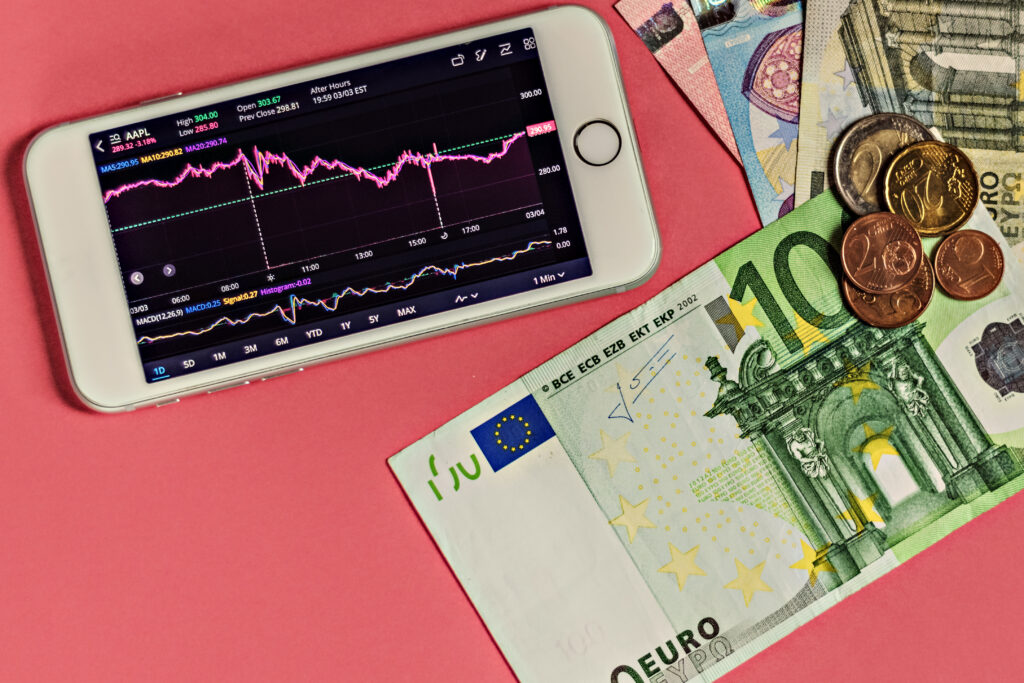Introduction
The Forex market is widely regarded as one of the most sensitive financial systems in the world. Small changes in politics, economic reports, or global events can quickly trigger large currency fluctuations. Traders spend countless hours analysing interest rate announcements, employment figures, and inflation data to predict currency trends. Yet, there is another dimension that is rarely considered: the influence of archaeological discoveries.
At first glance, archaeology and currency trading may seem unrelated. However, history has shown that when major discoveries are made, they can reshape a nation’s economy. These events influence tourism, attract foreign capital, and spark cultural pride among citizens. As these changes ripple through the economy, they can strengthen demand for the local currency in global markets.
This connection highlights how culture, history, and economics are deeply intertwined. By examining archaeological discoveries as economic catalysts, we gain valuable insights into how the past can shape the financial future, particularly in the world of Forex.
The Connection Between Archaeological Discoveries and Forex Market Reactions
The relationship between archaeological discoveries and Forex market reactions is far more profound than it appears. At the centre of this link is sentiment, which often drives currency trends as much as hard data. Positive sentiment creates optimism and attracts investment, while negative sentiment weakens economic confidence.
When ancient ruins, artefacts, or historical structures are uncovered, they reshape a nation’s identity. Citizens feel renewed pride, reinforcing domestic confidence. This morale boost translates into higher consumer spending and greater optimism about the future. At the same time, international attention focuses on the discovery, encouraging tourists and investors to direct money toward the country.
Tourism surges almost immediately, generating foreign currency inflows. Governments and investors frequently follow with cultural investments, funding restoration projects, museums, and exhibitions. These actions stimulate job creation and increase GDP growth. As the economy strengthens, traders perceive the local currency as more valuable.
Forex markets also respond through increased buying interest, stronger economic indicators, and sometimes even central bank actions. This makes archaeological discoveries more than cultural milestones—they become financial events capable of shifting global trading patterns.
Archaeological Discoveries as Catalysts for Tourism
Tourism is the most visible and immediate economic benefit of archaeological discoveries. History has proven that when new sites are revealed, the host country often sees a surge of international visitors eager to experience the discovery firsthand.
This influx of tourists triggers growth across multiple sectors. Hotels and rental properties see record bookings, while restaurants and cafes thrive as visitors spend generously. Transport industries—from airlines and railways to local taxis—expand to meet demand. Souvenirs, artisan crafts, and replicas of artefacts also become lucrative industries, providing opportunities for local businesses.
The direct result of these activities is an increase in foreign exchange earnings. Tourists must exchange their money into the local currency, creating higher demand. As demand rises, the local currency often appreciates, strengthening its position in the Forex market.
Beyond short-term boosts, archaeological discoveries promote long-term tourism development. Governments often invest in infrastructure, visitor centres, and preservation projects to ensure sustainability. These improvements create jobs, stimulate the economy, and provide a lasting source of income.
Tourism fuelled by archaeology also fosters cultural exchange. People from different nations connect, learn, and build relationships, creating both economic and social value. The combined effect of increased spending, rising currency demand, and improved infrastructure shows how archaeological discoveries can transform tourism into a long-lasting driver of economic and Forex strength.
Cultural Investments and Archaeological Discoveries
Major discoveries often spark cultural investments that create long-term financial value. Governments frequently fund restoration projects, museums, and exhibitions to showcase the treasures. Private investors, philanthropists, and cultural organisations also contribute, seeing opportunities in heritage tourism and education.
These investments generate immediate economic activity by creating construction projects, curatorial jobs, and research opportunities. They also establish a strong cultural economy that benefits education, tourism, and international reputation. For example, building museums not only preserves artefacts but also attracts millions of visitors annually.
Equally important is the rise in national pride. Citizens feel a stronger connection to their heritage and become more optimistic about the future. This confidence leads to increased consumer spending, boosting retail, entertainment, and domestic industries. Positive morale can also encourage entrepreneurship and innovation, further strengthening the economy.
Investors closely observe such developments. Foreign investors are particularly drawn to countries with cultural stability, heritage-driven tourism, and strong growth prospects. Their inflows of capital create additional demand for the local currency, which Forex traders quickly recognise.
The ripple effect is clear: cultural investments create a loop of economic growth, consumer confidence, and international attraction. Together, they turn archaeological discoveries into powerful financial engines capable of influencing currency markets far beyond initial expectations.
Case Studies: Archaeological Discoveries and Forex Market Reactions
History provides clear examples of how archaeological discoveries affect Forex markets.
In Egypt, the discovery of well-preserved pharaohs’ tombs revitalised the tourism industry. Visitors from around the world poured into the country, generating massive inflows of foreign currency. The Egyptian government invested in preservation and visitor facilities, while private investors supported exhibitions and research. This surge in activity strengthened the Egyptian pound, proving how archaeology can spark financial growth.
Greece experienced similar effects with the discovery of the Antikythera Mechanism, an ancient analogue computer that revealed Greek technological brilliance. Global attention turned toward Greece’s cultural achievements, boosting tourism and cultural investments. This economic activity positively influenced the euro’s performance in Greece, as traders saw renewed growth potential.
Peru’s recognition of Machu Picchu’s importance had a comparable impact. The site became an international sensation, drawing millions of tourists. Infrastructure investments expanded, creating jobs and strengthening the Peruvian Sol. The appreciation of the currency attracted Forex traders who saw the discovery as a long-term growth driver.
These case studies demonstrate that archaeology can transform national economies, boost confidence, and directly impact Forex markets.
Forex Market Reaction Mechanisms
Archaeological discoveries influence Forex markets through three major mechanisms: sentiment, indicators, and policies.
Trader sentiment shifts quickly when positive news emerges. Discoveries create optimism, encourage investors, and often generate a bullish environment where traders expect the currency to rise. This sentiment alone can increase buying pressure and drive up exchange rates.
Economic indicators also improve as tourism and cultural investments grow. GDP rises with increased spending, while unemployment falls as jobs are created across industries. These improvements are tracked closely by traders who use the data to make informed Forex decisions. Moderate inflation caused by economic growth can further signal stability.
Central banks may adjust policies in response to these shifts. If growth accelerates, interest rates may be raised to manage inflation, attracting even more foreign investment. In cases of rapid appreciation, central banks may intervene to stabilise the currency.
These mechanisms show how cultural events influence economic fundamentals, which in turn shape currency markets.
Conclusion
Archaeological discoveries may seem distant from financial concerns, yet they often create measurable impacts on economies and currency markets. By boosting tourism, encouraging cultural investments, and strengthening national pride, they reshape economic conditions in ways traders cannot ignore.
For Forex participants, understanding this connection provides unique insights. Discoveries may not cause immediate volatility like central bank announcements, but they can fuel long-term appreciation trends that offer trading opportunities.
History proves that the past and present are linked not only through culture but also through economics. Archaeological treasures reveal more than ancient civilisations—they highlight how deeply human heritage can influence the global financial system.
FAQs
How can archaeological discoveries affect the Forex market?
They influence Forex by creating stronger economic conditions. Tourism grows, cultural investments rise, and national pride strengthens, leading to greater demand for the currency. Traders see long-term appreciation potential.
What role does trader sentiment play?
Sentiment drives market psychology. Positive discoveries generate optimism and increased buying interest. This bullish outlook strengthens the local currency as traders anticipate future gains.
How do discoveries affect GDP and employment?
Tourism inflows and cultural projects boost GDP growth. Infrastructure investments and services create jobs, lowering unemployment. These improvements reflect economic health, positively impacting currency values.
Can archaeological discoveries lead to currency appreciation?
Yes. Increased demand for the local currency from tourists, investors, and capital inflows raises its value. Appreciation is strongest when discoveries are linked with sustained economic growth.
What is the impact of central bank policies?
Central banks may raise interest rates to manage growth, attracting more foreign capital. They may also intervene if appreciation risks hurting exports, stabilising the currency’s performance.
How does national pride influence Forex?
National pride boosts consumer confidence, leading to higher domestic spending and investments. This economic activity increases demand for the local currency, strengthening its value in global markets.
Are there historical examples?
Yes. Egypt’s pharaoh tombs, Greece’s Antikythera Mechanism, and Peru’s Machu Picchu all attracted global attention, strengthened economies, and contributed to local currency appreciation.
What are the economic benefits of cultural investments?
They create jobs, fund preservation, and expand museums and exhibitions. This increases tourism revenues and long-term economic stability, both of which enhance a currency’s strength.
How do discoveries promote sustainable tourism?
Governments often invest in infrastructure, conservation, and visitor facilities to protect sites. These actions ensure benefits last long-term, maintaining steady foreign inflows and stable Forex support.
Why should traders pay attention?
Forex traders who monitor archaeological discoveries can anticipate economic boosts before they appear in official data. This gives them a unique edge in spotting future currency appreciation trends
Click here to read more on Archaeological Discoveries




